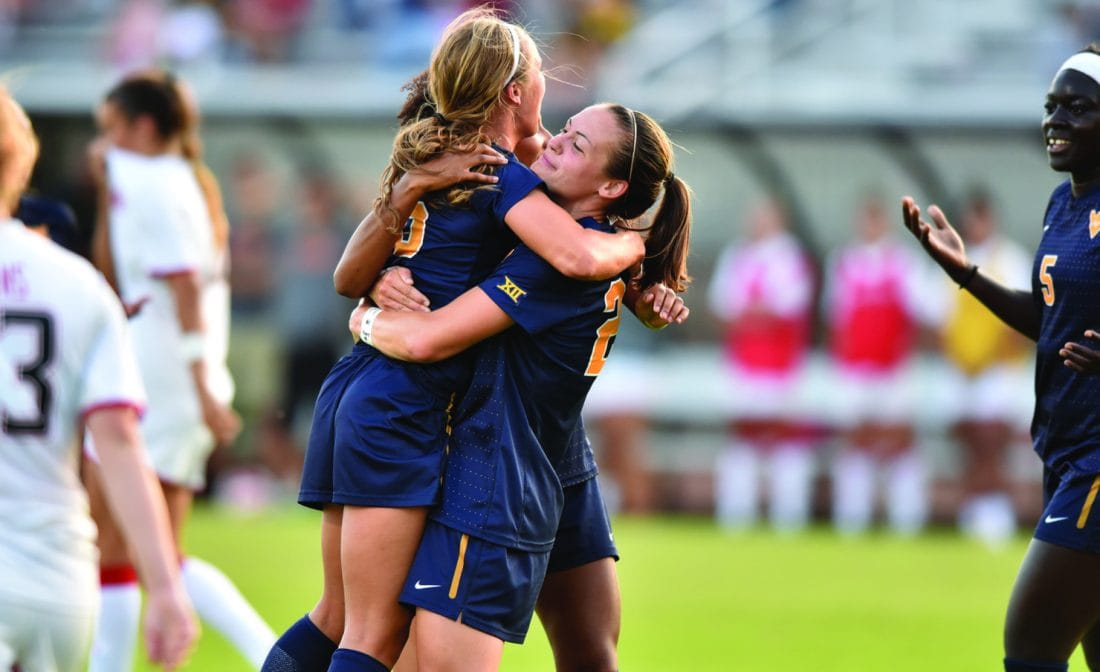How to Choose a College as a Student Athlete
If you’re a sports fan, you’ve seen the best that college sports have to offer. Whether it’s a big upset in March’s NCAA men’s basketball tournament or a close conference football showdown on a fall Saturday, there’s a unique allure to watching and playing college sports. Even so, the vast majority of collegiate athletes won’t go on to play professional sports. In fact, just 2% of college athletes across all sports go on to play professionally.
This is important to consider if you’re a high school student-athlete looking at colleges. If your ultimate goal is to play professionally, your choice of school is going to reflect that. You’ll want to go to a school where you’ll receive the most playing time and national exposure. Like many student-athletes, if you simply want to continue your athletic career at the collegiate level, you’ll have more options available.
NCAA Divisions
The first thing a potential NCAA athlete needs to know is about divisions. Division I college sports are the ones you see on television. The March Madness men’s basketball tournament is Division I, as are the annual College Football Playoffs.
Division I athletic programs typically have the largest student population and athletic budgets. They also offer the widest variety of academic programs and athletic teams. An estimated 173,500 student-athletes play in Division I college sports for 346 schools. 53% of all Division I student-athletes receive some sort of athletic scholarship.
Division II features smaller schools with smaller athletic budgets, but the level of competition is still quite high. Many Division II programs emphasize academics and community engagement, relaxing away from the kind of pressure and exposure common in Division I programs. 56% of all student-athletes receive some form of athletic financial aid.
Division III athletic programs are more focused on academics for the simple reason that athletes do not receive athletic scholarships. There are 183,500 Division III student-athletes that compete for 450 schools. The way that Division III athletic programs offer financial aid to student-athletes is through academic grants or need-based scholarships.
In fact, 75% of Division III athletes receive some form of financial aid, with the average institutional gift totaling out at $13,500. The smaller size of Division III schools (an average of 2,600 students) is an academic benefit because student-athletes have smaller class sizes and more face-to-face time with their professors and instructors.
NAIA
The above three divisions are all NCAA schools. That is, they’re under the umbrella of the National Collegiate Athletic Association. The National Association for Intercollegiate Athletics (NAIA) actually predates the NCAA as an institution. Many of the schools in the NAIA are smaller private colleges and universities. The competition level is comparable to the NCAA’s Division III with one chief difference.
The NAIA is able to offer athletic scholarships, unlike the NCAA’s Division III. In fact, according to the NAIA’s website, they provide $800 million in scholarships to student-athletes each year. There are over 77,000 student-athletes who compete in NAIA sports every season. It’s worth noting that the NAIA does not offer scholarships to every player on each team. A football team can have a roster of around 90 players, but only 24 scholarships are given out to football players.
The same goes for baseball teams which usually have rosters of about 25 players. Only 12 scholarships are awarded to each club. The NAIA isn’t better or worse than the NCAA, it’s just different. Its member schools can offer a better life/sport balance than Division I major sports programs, and something every student-athlete should consider when selecting a school.
Recruiting
NCAA Division I athletic programs are subject to strict recruiting rules to ensure competitive fairness. It’s helpful to be aware of these as a student-athlete so that you don’t commit any violations that lead to your school being punished down the line. The recruiting guidelines are much more relaxed for Division III athletics.
Schools are allowed to send potential recruits materials like brochures and campus visit invitations at any time. Division III coaches are also allowed to contact athletes through phone calls and other means without any restrictions. After a student athlete’s sophomore year, Division III coaches can meet with potential recruits off campus without any restrictions.
The NAIA doesn’t have any recruiting rules either. This means that coaches can contact student-athletes at any time of year and via any method. This lack of restriction goes both ways. Student-athletes can make as many on-campus visits to NAIA programs as they want in order to get a better feel for the school.
This is in stark contrast to NCAA Division I policy, which only allows students to make a certain number of “official” campus visits. The school can only provide the cost of transportation, meals, and tickets to a home sporting event during said visits.
Registering
If you’re a student-athlete who’s actively recruited by NCAA Division I and Division II schools, you’ll need to create a certification account. You can do that by visiting the NCAA certification account page, linked here. The best time to do this is during your sophomore year of high school so that you’ll be ready to go on official visits your junior year. If you’re being recruited by NCAA Division III schools, you can create a free NCAA Profile account. More information on the registration process can be found at this link here.
Personal Choice
While it’s good to know about all the logistics when it comes to choosing a school as a student-athlete, a lot of it boils down to personal choice. What do you value as a person, a student, and an athlete? You may receive one or two Division I offers that are located across the country from where you live along with a few Division II and III offers closer to your home.
What’s more important to you: being near your family or playing Division I sports at the highest collegiate level in the country? These are the types of questions you’ll want to ask yourself and discuss with your family.
There’s also the matter of academics and class size. Many Division II, Division III, and NAIA programs have smaller student body populations. They also put more of an emphasis on the educational portion of being a student-athlete. If academics are most important to you, you may want to consider Division II, Division III, or NAIA schools.
Those three levels aren’t as much of a time commitment, allowing you to enjoy some of the pleasures of college life. If you attend a Division I program, you’ll be spending the bulk of your time on your sport and your classes. Your family, academic advisors, and high school coaches are great resources. You should discuss the pros and cons of each level with them and take some time to think about what your decision may mean for your future.
Are you a prospective student looking for further college resources? Explore Colleges of Distinction to pick the perfect university for your future goals! Visit our website to look at more helpful information!








